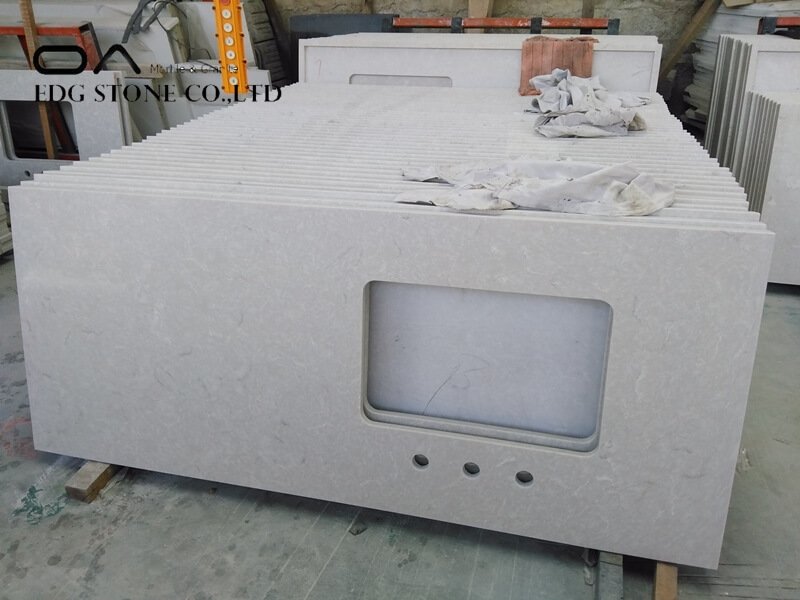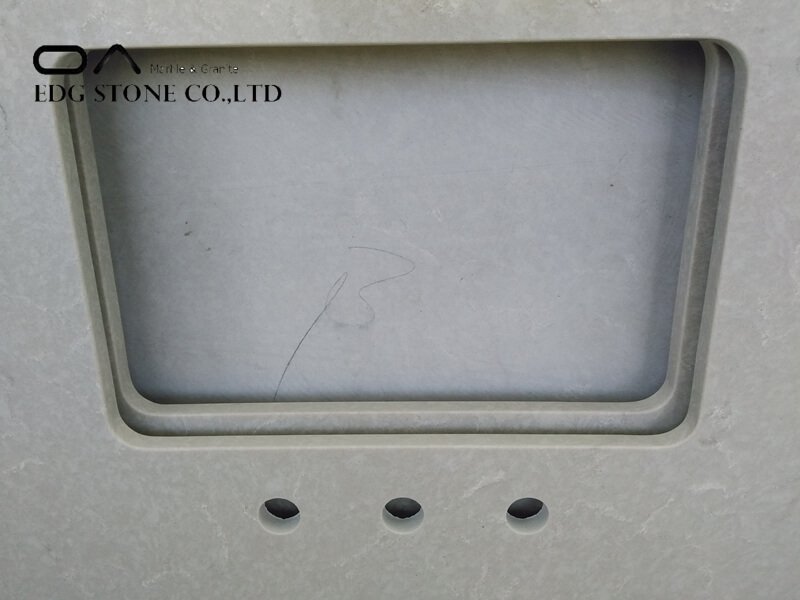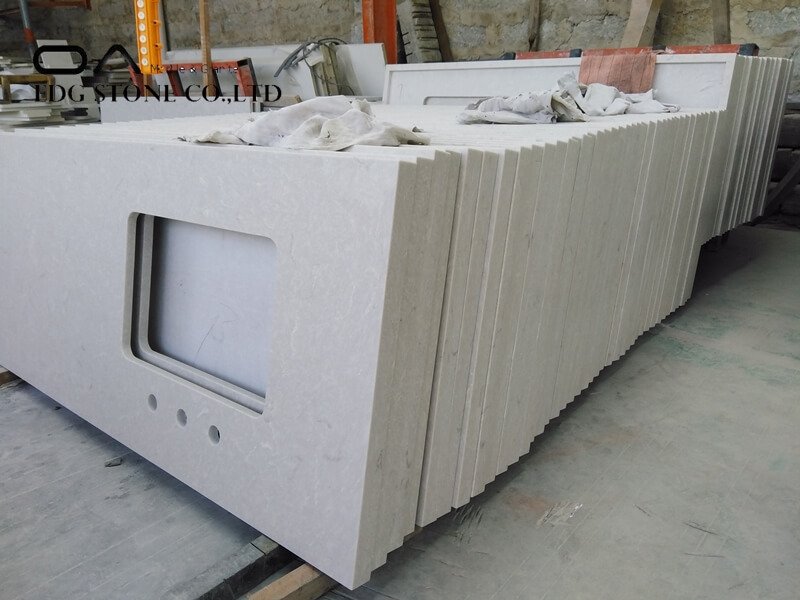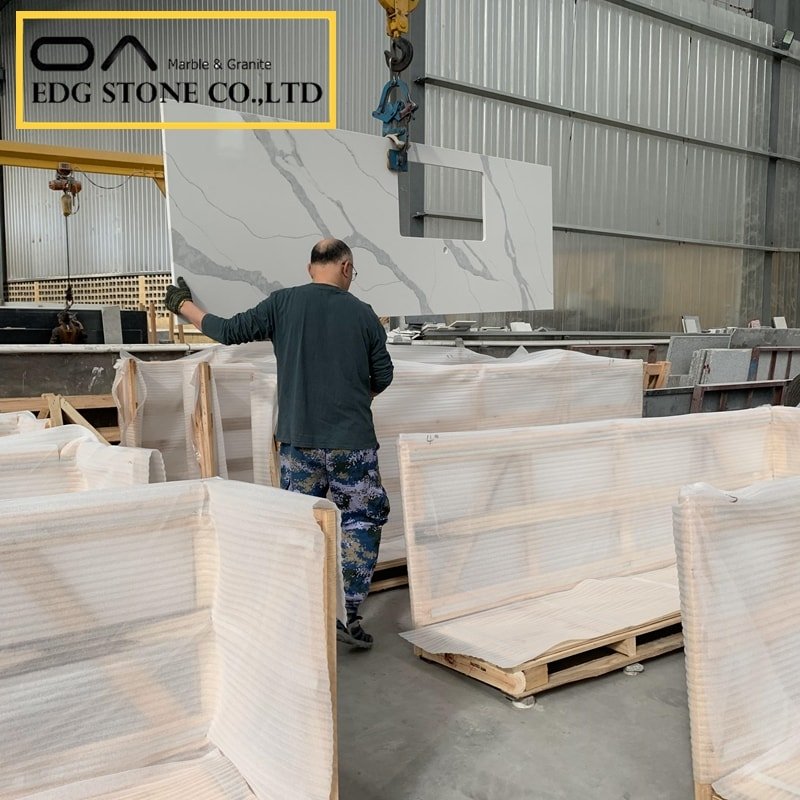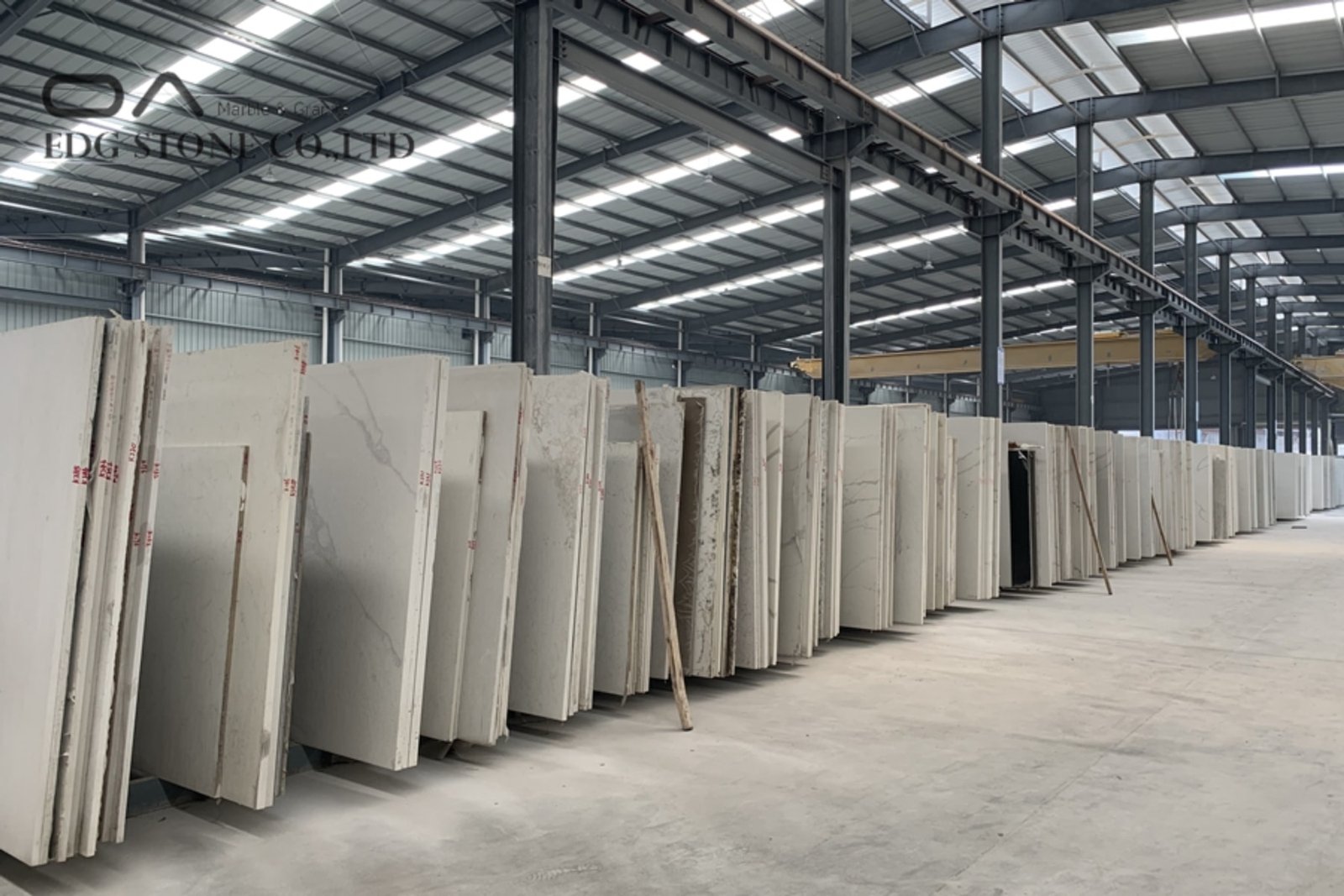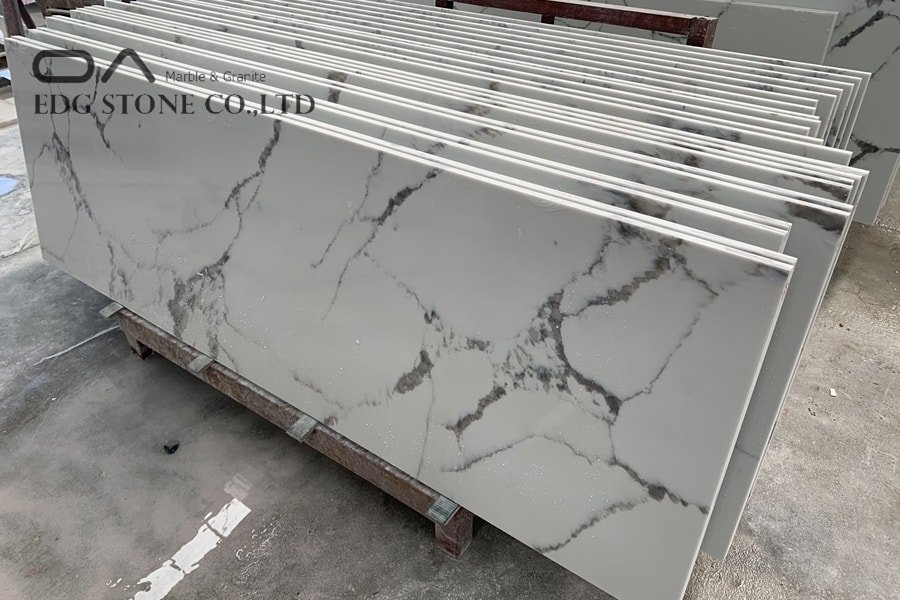Cabinets are the most frequently contacted and frequently used family plate in every family’s daily life. It needs to be purchased and manufactured and installed reasonably. The choice of countertops is more important. The following mainly explains the production and installation methods of artificial quartz stone countertops.
With the high hardness of quartz sand and resin and high-frequency compression molding under vacuum conditions, the quartz plate has the advantages of high hardness and good compactness.
The advantages shown in daily use are as follows: 1. General kitchen utensils will not scratch the countertop; 2. Corrosion resistance and pollution resistance, and will not be corroded or contaminated by soy sauce, vinegar, etc.; 3. Low oil absorption and easy to oil stains Wipe off, it will become brighter and brighter in use.
In order to let everyone know more about quartz stone slabs, use quartz stone slabs more standardized, and minimize rework, countertop damage, etc. Now through the editor’s own production, installation, and use experience, the following simple quartz stone cabinet countertops are developed. installation method.
Terminology:
Like ordinary countertops, quartz stone countertops are also composed of countertops, water-retaining, hanging edges, basin holes, stovetop holes, gas pipe holes, etc. The following is an introduction to the above major components and a specific discussion of production and installation Precautions.
In general, if you are not familiar with cabinets, decoration, and quartz, it is best to contact the quartz plate manufacturer, and the manufacturer will provide a suitable design, production, and installation plan. Only the manufacturer has a say in its own products. Make a comprehensive plan in terms of material selection, structural planning, installation timing, cabinet requirements, and ease of use, so as to avoid damage during use.
Countertop: It is the main part of the cabinet countertop, so the choice of countertop is very important, which is directly related to the quality of the entire countertop. First of all, you must choose the type of color you like, but also make a reasonable choice based on the layout of the kitchen, the brightness of the kitchen, the color structure of the cabinets, and the degree of openness of the kitchen to prevent problems such as unmatched or rapid damage. In China, due to price and other reasons, 15mm plates are commonly used, but from the point of view of use, you should choose thicker ones, but it is not as thicker as possible. 20mm is a more suitable thickness, from the weight and price. All are relatively reasonable. Width, the common width in China is 600mm. This width is more appropriate from the Chinese body structure, and it is also a more beautiful width, and it matches well with the width of the stove and the basin.
Since the structure of the cabinet mainly includes L-shaped, linear, irregular corners, etc., except for the linear type, the other two types need to be spliced and installed. Therefore, a reasonable design structure is required to prevent splicing and impact resistance. The load-bearing capacity is poor, so professional technicians are required to design a reasonable structure after an on-site investigation.
Mainly pay attention to the following points: 1. Prevent air connection and no support at the splicing place; 2. Prevent the span from being too large. Generally, the span of 15mm plates cannot exceed 880mm; 3. If air connection is necessary, reinforcing ribs need to be bonded on the ground ( Backplane); 4. Prevent no support at the corners of the wall.
During installation, try to avoid using marble glue. For splicing joints, it is recommended to use resin glue that matches the board (which needs to be modulated by the quartz stone manufacturer or specified by the manufacturer), and glass glue is recommended for parts that are in contact with the cabinet.
If it is a monolithic wooden cabinet (ordinary cabinet), the installed cabinet needs to be leveled. You can directly place the countertop on the cabinet. Lay it up, then put the table on top). If it is a cement tile structure, you need to place the countertop on the cabinet first, pre-install and level it, and pad the low point with a hard material. After leveling, apply glass glue on the contact between the cabinet and the board, and then place the countertop. Okay, use a rubber hammer to hammer it down. If there is a part that needs to be spliced, after laying the glass glue, spread the resin glue on the contact surface respectively, and the splicing and installation are completed at one time.
Between the lower surface of the countertop and the cabinet body, try not to pad wooden or plastic countertops. That is, cabinets that need quartz countertops, do not need to install panels.
Hanging edge: The hanging edge is the outer edge of the cabinet, which mainly prevents water on the countertop from entering the cabinet from the lower surface of the countertop, and also plays a beautiful role. The distance between the surface of the table and the lower edge of the hanging edge is between 30-45mm, which is more beautiful and practical.



